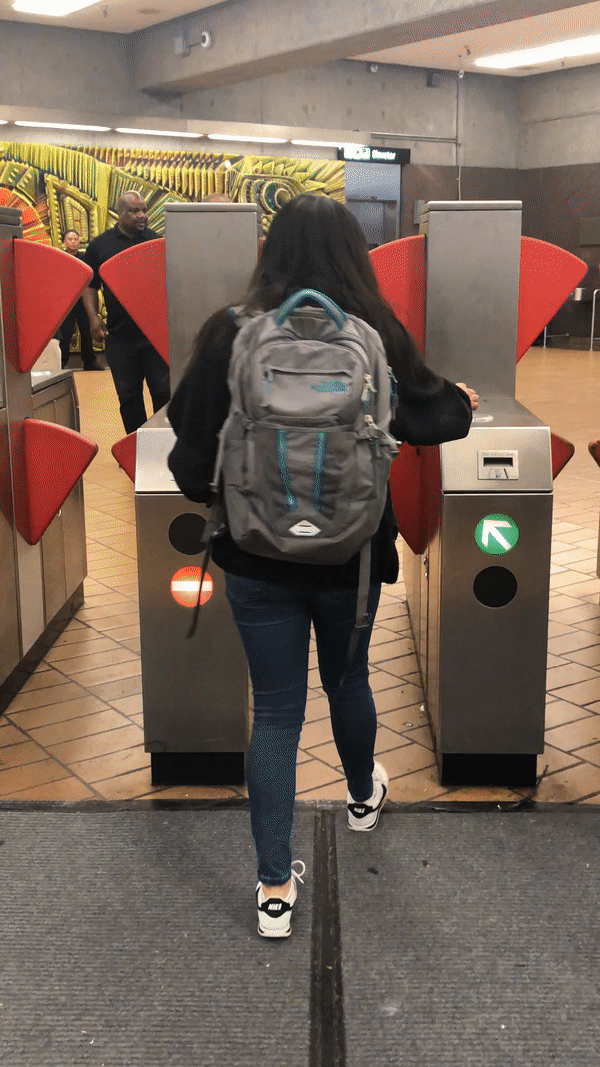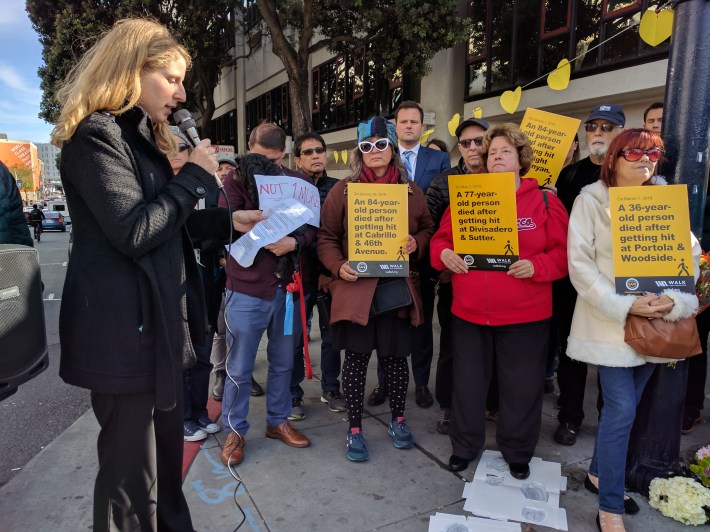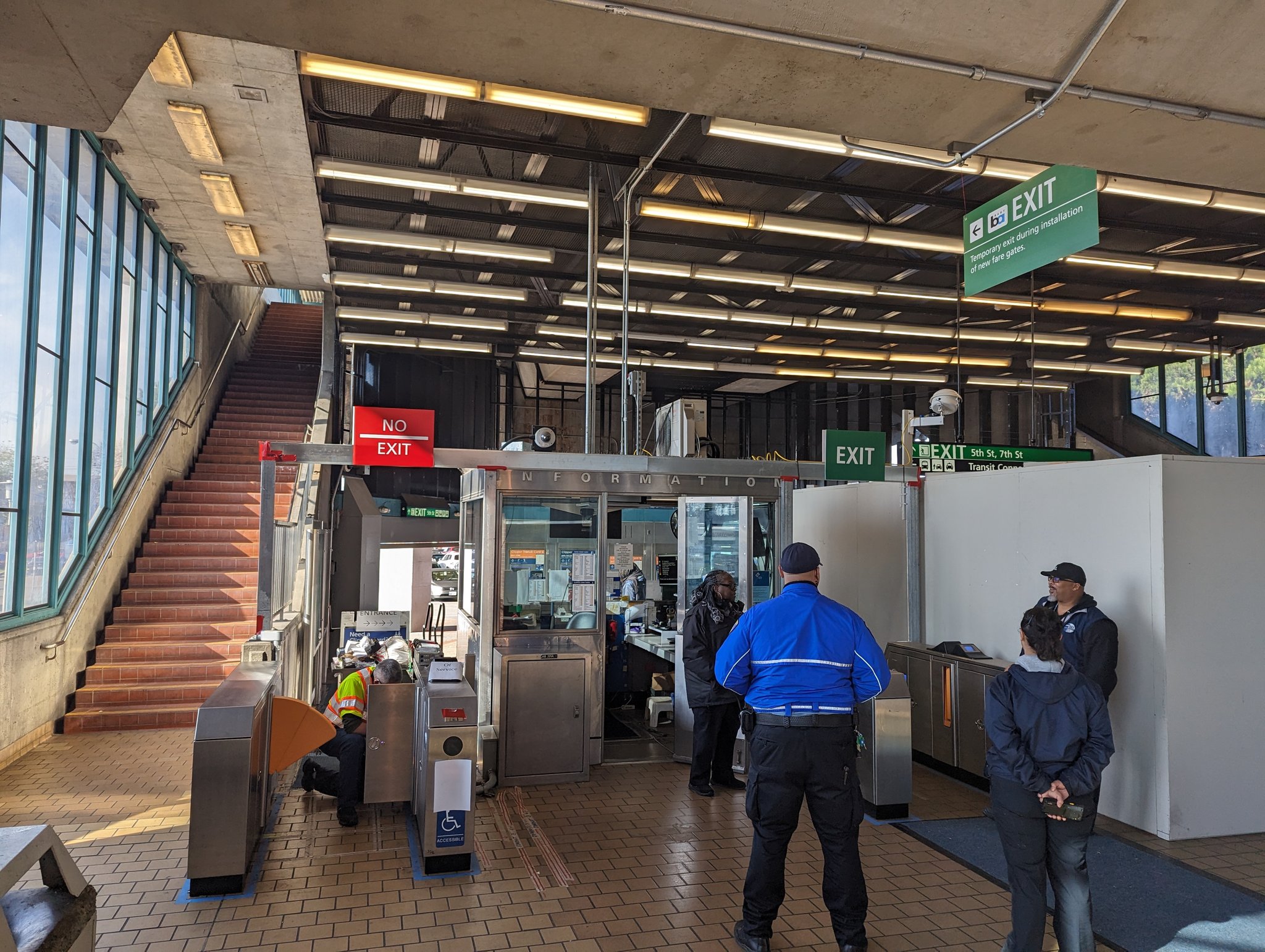Here are a few Streetsblog news nuggets to start your weekend.
West Oakland BART getting new fare gates
West Oakland BART is the next station to get high-level fare gates as the agency attempts to reduce fare evasion. From a BART statement:
The prototypes being installed at West Oakland will help us to test the new gates in a station environment with riders. These are not the final version of the fare gates that will be installed throughout the rest of the system. The development team is researching the latest door-braking technology and will add that enhanced capability to the fare gates in the coming months.
BART is currently experimenting with several different types of gates, such as this one at Richmond BART:

Readers have probably seen other gate designs at other stations, including at Rockridge and in front of the elevators in downtown San Francisco. The hope is finalize a design and have all the fare gates modernized and improved by the end of 2025.
Money for Tenderloin safety

The Tenderloin is filled with high-speed, surface level freeways clogged with fast-moving traffic. No wonder it is also a nexus of high-injury corridors and deadly collisions. That's why safe-streets advocates were happy to hear that the Feds are sending $8 million to help make the Tenderloin safer. From a release from Dean Preston's office, which represents the district:
The Federal Department of Transportation announced that the SFMTA has been awarded an $8 million federal grant from the Safe Streets 4 All program for the Tenderloin Community Safe Streets Project. These funds will help address pedestrian safety issues in the Tenderloin, where pedestrians are 10 times more likely to be injured or killed by a car than elsewhere in the city.
In November, the Transportation Authority Board programmed over $2 million in Prop L funds in the Signal Maintenance 5-Year Prioritization Program (5YPP) to provide the local match if the Safe Streets 4 All program was approved. Now that the federal grant has been confirmed, the Prop L funds will be leveraged to deliver the projects in the 5YPP.
Over 79% of households in the Tenderloin do not own a car and the neighborhood has a high number of pedestrians, bicyclists, and transit riders who are exposed to high vehicle volumes and speeds, resulting in high fatal and near-fatal collisions. Every street in the Tenderloin is on the City’s High Injury Network, and this one neighborhood accounts for 68% of all fatal crashes in San Francisco.
The Tenderloin Community Safe Streets Project will include a combination of traffic signal upgrades along Larkin and Polk Streets, bike safety improvements along Turk Street and Golden Gate Avenue, and a road diet on the 100 block of Golden Gate Avenue, also known as the Golden Gate Greenway. The traffic signal upgrades will include left-turn phasing, larger 12-inch signal heads, and mast arms to enhance signal visibility and pedestrian signal improvements, upgraded curb ramps, and street lighting. The bike safety infrastructure improvements at intersections along Turk Street and Golden Gate Avenue will include protected corners that slow turning vehicles and separate bicyclists from traffic and bike signals.
That all sounds great, but Streetsblog hopes SFMTA will make good on its commitments to the Tenderloin. More money helps, but the agency will also have to get out of its own way and stop watering down safety projects and prioritizing parking and car throughput.
Berkeley takes a big step forward towards a North Berkeley BART development

The Berkeley City Council took a major step forward Tuesday towards allowing development on the asphalt crater that current exists above the North Berkeley BART station.
As explained in this Tweet from BART director Rebecca Saltzman:
Tonight Berkeley City Council approved objective design standards for North Berkeley BART which is more exciting than it might sound.
— Rebecca Saltzman (@RebeccaForBART) December 13, 2023
This was Council’s final vote allowing housing development to happen!
Soon 750 homes - 50% affordable- will replace parking lots at N Berk BART! pic.twitter.com/BlVTsFfDFD
Read more about the meeting and the development plans in Berkeleyside.
"Ashby BART is next," wrote Saltzman on social media. "Should be seeking developers early next year."





